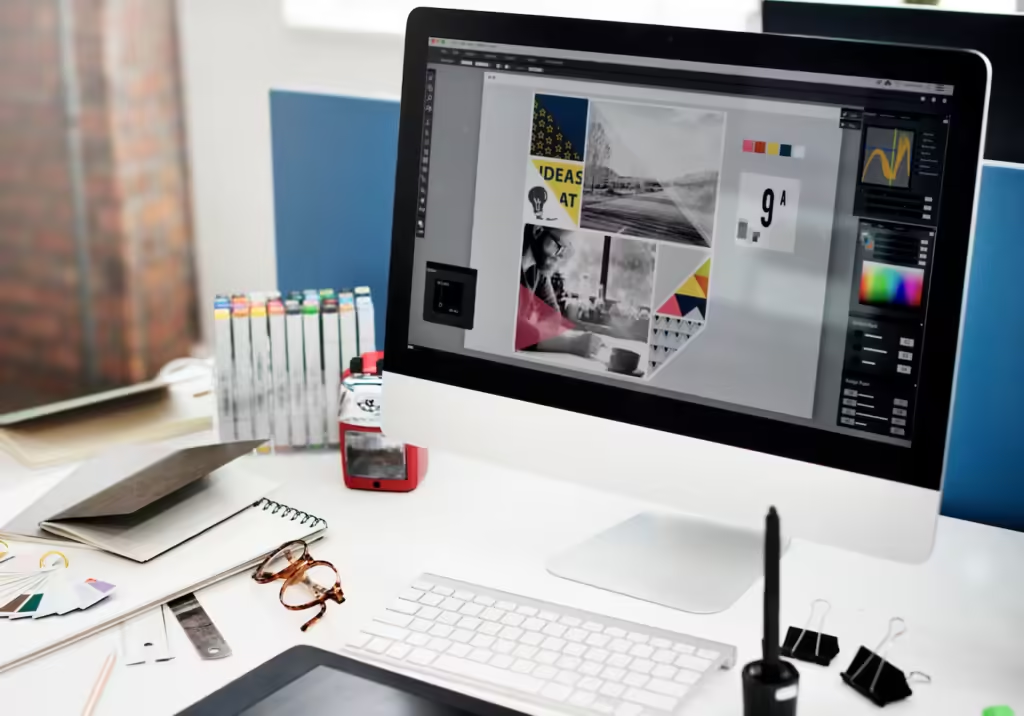Graphic designing is the art and practice of creating visual content to communicate messages. By applying visual hierarchy and page layout techniques, graphic designers use typography, imagery, color, and form to meet users’ specific needs and focus on the logic of displaying elements in interactive designs to optimize the user experience. This discipline encompasses a variety of activities, including creating logos, brochures, advertisements, websites, and user interfaces, all aimed at conveying information in a visually appealing and effective manner. Graphic designing is essential in branding and marketing as it helps to establish a company’s identity and convey its message clearly and attractively to its target audience.
Graphic designing is essential because it enhances communication, builds strong brand identities, boosts marketing efforts, improves user experiences, fosters emotional connections, conveys professionalism, and aids in information retention.



We excel in graphic designing due to our commitment to creativity, attention to detail, and understanding of client needs. Our team of talented designers brings a wealth of experience and expertise to every project, ensuring that each design is unique, visually appealing, and aligned with our clients’ objectives. We prioritize collaboration and communication, working closely with clients to understand their vision, goals, and brand identity. This collaborative approach allows us to deliver designs that not only meet but exceed expectations. Additionally, we stay updated with the latest design trends, tools, and techniques, enabling us to produce innovative and cutting-edge designs that resonate with target audiences. Whether it’s branding, marketing materials, or digital design, our dedication to quality and customer satisfaction sets us apart as the best choice for graphic designing needs.
By implementing these three simple steps—strategic partner selection, compelling content creation, and data-driven optimization—you can elevate your affiliate marketing game and achieve remarkable success in driving traffic, conversions, and revenue.
Visual elements include typography, color, imagery, icons, and illustrations. These elements are used to create visually appealing designs that attract attention and effectively communicate messages. Typography, for example, dictates the style and readability of text, while color choices can evoke emotions and convey brand identity. Imagery and illustrations enhance visual interest and help convey complex ideas in a simple and engaging manner.
Layout and composition refer to the arrangement of visual elements within a design. This includes considerations such as balance, hierarchy, alignment, and white space. A well-structured layout guides the viewer's eye through the design, prioritizing important information and creating a harmonious overall look. Proper composition ensures that the design is visually appealing, easy to navigate, and effectively communicates the intended message.
Brand identity and communication are essential components of graphic designing, particularly in the context of branding and marketing materials. Designers must understand the client's brand identity, values, and target audience to create designs that reflect the brand personality and resonate with the intended audience. Effective communication involves conveying the desired message clearly and succinctly through visual elements, ensuring that the design achieves its intended purpose and elicits the desired response from the audience.
Graphic designing encompasses a wide range of activities aimed at creating visual content for various purposes. Some common activities within graphic designing include

Graphic designing is the art and practice of creating visual content to communicate messages. It involves combining text, images, and other elements to produce visually appealing and effective designs for various media.
The main areas include:
Creating a strong visual identity involves:
The design process typically includes:
Typography is crucial in graphic design as it affects readability, accessibility, and the overall visual impact. Good typography enhances the design’s aesthetic and helps convey the intended message effectively.
Handling client feedback involves:
Graphic design plays a vital role in marketing by creating visually appealing and persuasive materials that attract and engage audiences, communicate key messages, and drive conversions. It enhances brand recognition and helps establish a professional image.
Ensuring accessibility involves:
Staying current involves:
Your portfolio should include:
